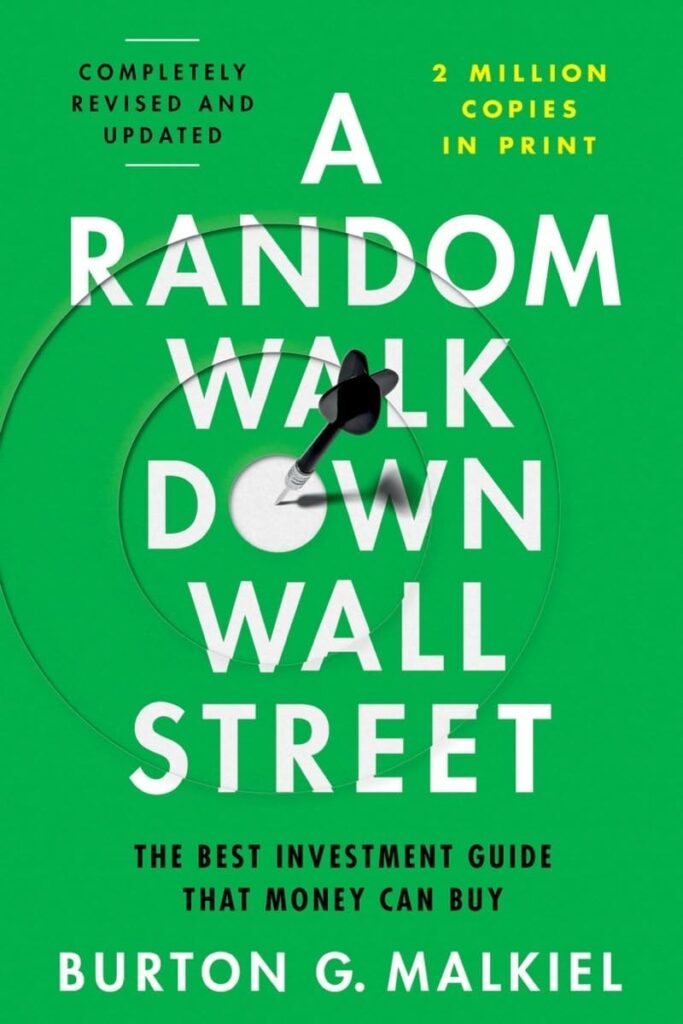Investing in stocks can seem like a daunting task, especially for beginners. With countless financial gurus, YouTube influencers, and self-proclaimed experts flooding the internet with advice, it’s easy to feel overwhelmed. You might have seen those lengthy videos promising to reveal the “secrets” of stock market success or articles claiming to have the perfect formula for instant wealth. But how do you separate the wheat from the chaff?
We understand your confusion, and we’re here to help. Instead of relying on a single source or following the latest trending advice, we’ve done the heavy lifting for you. We’ve sifted through numerous articles, watched hours of expert videos, and analyzed advice from seasoned investors to bring you a consensus view of what really matters when you’re starting out in the stock market.
The result? We’ve distilled all this information into 11 essential tips that the pros consistently agree are crucial for beginner investors. These aren’t flashy get-rich-quick schemes or complex strategies that require a finance degree to understand. Instead, they’re practical, time-tested principles that can help you build a solid foundation for your investing journey. Whether you’re a student looking to grow your savings, a young professional planning for the future, or anyone in between, these tips will give you the confidence to take your first steps in the exciting world of stock investing.
1. Start with index funds
When you’re just starting out, it’s smart to keep things simple. Index funds are a great way to do that. These funds buy stocks from lots of different companies all at once, following a specific market index.
For example, an S&P 500 index fund buys stock in the 500 biggest companies in America. This includes familiar names like Apple, Amazon, and Coca-Cola. By investing in an index fund, you’re spreading your money across many companies instead of just one or two.
This makes index funds less risky than buying individual stocks. It’s like not putting all your eggs in one basket. If one company in the index has problems, the others can help balance it out. Many experts, including famous investor Warren Buffett, think index funds are the best choice for most people.

The Vanguard S&P 500 ETF (ticker symbol: VOO) is a popular index fund. If you bought one share of VOO, you’d instantly own a tiny piece of all 500 companies in the index. In the past 10 years, this fund has grown by about 11% per year on average. That means if you invested $1,000 ten years ago, you’d have about $2,800 today – not bad for a beginner-friendly investment!
2. Use a beginner-friendly app
These days, you don’t need to call a stockbroker to invest. You can do it right from your phone! There are lots of easy-to-use apps made just for beginner investors. These apps have revolutionized investing by making it more accessible to everyone, not just Wall Street experts.
Apps like Robinhood, Webull, and Acorns let you start investing with just a few dollars. They have simple interfaces that make buying stocks as easy as online shopping. Many of these apps also offer free stocks when you sign up, giving you a head start on your investing journey.
For instance, Robinhood offers a free stock (worth between $2.50 and $225) when you open an account. Webull often gives away multiple free stocks for new accounts. These bonuses can be a great way to start your portfolio without risking your own money.

These apps also offer educational resources. Acorns, for example, has a “Money Basics” course that teaches you investing fundamentals. This can help you learn as you go, building your knowledge alongside your portfolio.
Just remember to do your research before choosing an app. Make sure it’s trustworthy and has the features you need. Look for things like low fees, good customer service, and strong security measures to protect your money and personal information.
3. Invest for the long-term
When it comes to stocks, patience pays off. The stock market goes up and down all the time, but over many years, it tends to go up overall. This long-term approach is crucial because it allows you to ride out short-term market fluctuations and benefit from the overall growth of the economy.
Think of it like planting a tree. You wouldn’t expect a seedling to give you shade right away. But if you take care of it for years, it will grow into a big, strong tree. Stocks work the same way – they need time to grow.
In 2008, during the financial crisis, the S&P 500 fell by about 38%. That’s a big drop! If you sold your stocks then, you would have lost a lot of money. But if you held onto your investments, you would have seen them recover and grow. By 2013, just five years later, the market had not only recovered but reached new highs.
This shows why it’s important to think in terms of years or even decades, not days or weeks. This long-term thinking can help you avoid panicking when stock prices drop temporarily. Remember, you’re investing for your future, not for next week.
4. Diversify your investments
You’ve probably heard the saying “Don’t put all your eggs in one basket.” This is super important in investing. Putting all your money in just one or two stocks is risky. If those companies have problems, you could lose a lot. Diversification is a key strategy to manage risk in your investment portfolio.
Instead, spread your money across different types of stocks. Buy stocks in different industries, like technology, healthcare, and energy. You can also invest in companies of different sizes and from different countries. This way, if one part of your investment doesn’t do well, the others might make up for it.
Here’s a practical example of diversification:
- 40% in a U.S. total stock market index fund (like VTI)
- 20% in an international stock index fund (like VXUS)
- 20% in a bond index fund (like BND)
- 10% in a real estate investment trust (REIT) fund (like VNQ)
- 10% in individual stocks you research and choose yourself
This mix gives you exposure to thousands of companies across different sectors and countries, as well as some bonds for stability. The REIT fund adds real estate to your portfolio without you having to buy property. And the 10% in individual stocks lets you invest in companies you believe in, without risking too much of your money.
Remember, diversification doesn’t guarantee profits or protect against losses, but it can help manage risk and potentially improve returns over time.
5. Start small and consistent
You don’t need a lot of money to start investing. In fact, starting small can be a great way to learn without risking too much. Even $25 or $50 a month can get you started. The key is to be consistent and to start as early as possible to take advantage of compound interest.
The key is to be consistent. Set up automatic investments where a little bit of money goes into your investment account each month. This is called dollar-cost averaging. It’s a smart strategy because it helps you avoid the temptation to time the market, and it can reduce the impact of market volatility on your investments.

Let’s look at a real-world example. Say you decide to invest $50 a month in an S&P 500 index fund. Some months, when the market is down, your $50 might buy 2 shares. Other months, when the market is up, it might only buy 1.5 shares. Over time, this averages out, potentially giving you a better overall price than if you tried to guess the best time to invest.
Here’s how it could look over a year:
- January: $50 buys 2 shares at $25 each
- February: $50 buys 1.67 shares at $30 each
- March: $50 buys 1.43 shares at $35 each
- April: $50 buys 2.5 shares at $20 each (market dip)
- … and so on
By the end of the year, you’ve invested $600 and own a variety of shares bought at different prices. This strategy can help smooth out the ups and downs of the market.
Remember, the goal is to build the habit of regular investing. As your income grows, you can increase your monthly investment. But starting small and being consistent is a great way to begin your investing journey.
6. Learn the basics
Before you start buying stocks, it’s important to understand some basic terms and concepts. This knowledge will help you make more informed decisions and feel more confident as an investor. Here are a few key terms to get you started:
- Stock: A small piece of ownership in a company. When you buy a stock, you become a partial owner of that company.
- Dividend: Money some companies pay to stockholders, usually quarterly. For example, if you own 100 shares of a company that pays a $1 annual dividend, you’d receive $25 every three months.
- Market cap: The total value of a company’s stocks. It’s calculated by multiplying the number of shares by the current stock price. For instance, if a company has 1 million shares and each share is worth $50, its market cap is $50 million.
- P/E ratio: Price-to-Earnings ratio. It’s calculated by dividing a company’s stock price by its earnings per share. A lower P/E might indicate a cheaper stock, but it’s not the only factor to consider.
Don’t worry if this seems confusing at first. There are lots of free resources online to help you learn. Websites like Investopedia have easy-to-understand explanations of investing terms. Many brokers also offer free educational resources. For example, Fidelity has a “Learning Center” with articles, videos, and even online classes about investing basics.

Remember, you don’t need to know everything before you start investing, but understanding these basics can help you make better decisions and feel more confident about your investments.
7. Use tax-advantaged accounts
When you make money from stocks, you usually have to pay taxes on it. But there are special accounts that can help you pay less in taxes. These accounts are especially important for long-term investors because they can significantly boost your returns over time.
One of these is called a Roth IRA. With a Roth IRA, you pay taxes on the money you put in, but you don’t have to pay taxes when you take the money out later. This can save you a lot if your investments grow over time.
For example, let’s say you invest $6,000 in a Roth IRA when you’re 25 years old. If your investments grow by an average of 7% per year, by the time you’re 65, that $6,000 could grow to about $88,000. In a regular taxable account, you’d have to pay taxes on that $82,000 gain when you withdraw it. But in a Roth IRA, you can withdraw all $88,000 tax-free!
Another option is a traditional IRA or 401(k). With these accounts, you don’t pay taxes on the money you put in now, but you do pay taxes when you take the money out in retirement. This can be helpful if you expect to be in a lower tax bracket when you retire.
Here’s a quick comparison:
- Roth IRA: Pay taxes now, withdraw tax-free in retirement
- Traditional IRA/401(k): Don’t pay taxes now, pay taxes on withdrawals in retirement
Remember, these accounts have rules about when you can withdraw money without penalties, usually after age 59½. But the tax benefits make them powerful tools for long-term investing.
8. Don’t try to time the market
It’s tempting to try to buy stocks when they’re cheap and sell them when they’re expensive. This is called “timing the market.” But even experts have a hard time predicting when stocks will go up or down. Trying to time the market can lead to missed opportunities and unnecessary losses.
Instead of trying to time the market, focus on investing regularly over time. This way, you’ll buy some stocks when they’re higher and some when they’re lower. Over time, this usually works out better than trying to guess the perfect time to buy or sell.
In March 2020, when the COVID-19 pandemic hit, the stock market crashed. The S&P 500 fell by about 34% in just over a month. Many people panicked and sold their stocks. But if they had held on, they would have seen the market recover all those losses by August of the same year. Those who kept investing regularly during this time were able to buy stocks at lower prices and benefit from the recovery.

Here’s another way to think about it: Imagine you want to buy $1,200 worth of a stock over a year. You could:
- Try to time the market: Wait and invest all $1,200 when you think the price is lowest.
- Invest regularly: Put in $100 every month, regardless of the price.
Option 2 is usually safer and often more effective. It’s called dollar-cost averaging, which we mentioned earlier. It helps you avoid the stress of trying to predict market movements and ensures you’re consistently investing.
Remember, it’s “time in the market” that matters, not “timing the market.” The longer your money is invested, the more time it has to grow.
9. Keep learning
The stock market is always changing, so it’s important to keep learning. This doesn’t mean you need to become a financial expert, but staying informed can help you make better investment decisions and feel more confident about your choices.
Read books about investing, follow financial news, and maybe even take an online course. Many successful investors, like Warren Buffett, are known for their dedication to continuous learning. Buffett reportedly spends about 80% of his working day reading and thinking.
Here are some ways you can keep learning:
- Books: Start with classics like “The Intelligent Investor” by Benjamin Graham or “A Random Walk Down Wall Street” by Burton Malkiel.
- Online courses: Platforms like Coursera and edX offer free courses from top universities on investing and finance.
- Financial news: Follow reputable sources like The Wall Street Journal, Bloomberg, or CNBC. Many offer free articles or newsletters.
- Podcasts: Listen to investing podcasts like “Motley Fool Money” or “Planet Money” during your commute or while doing chores.
- Company reports: Read annual reports and earnings calls transcripts of companies you’re interested in. This can give you insights into how businesses operate and make money.
But be careful where you get your information. Not everything you read online is trustworthy. Be especially wary of “hot tips” or get-rich-quick schemes. Stick to well-known sources like financial newspapers and respected investing websites.
For example, if you hear about a “can’t-miss” stock tip on social media, don’t rush to invest. Instead, look up the company’s financial statements, read recent news about the company and its industry, and consider how it fits into your overall investment strategy.
And remember, no one knows everything about investing. Even experienced investors are always learning new things. The goal is to gradually build your knowledge over time, making you a more informed and confident investor.
10. Be prepared for ups and downs
The stock market can be like a roller coaster. Sometimes it goes up, and sometimes it goes down. It’s normal for stock prices to change a lot, even in a single day. Understanding this volatility and preparing for it emotionally is crucial for long-term investing success.
When you see your investments losing value, it can be scary. But try not to panic. If you’ve invested in good companies or index funds, they will probably recover over time. Historical data shows that the stock market has always recovered from downturns, even if it sometimes takes a few years.

Think of market drops as sales. When stocks go down, you can buy more shares for the same amount of money. This can actually be a good thing if you’re investing for the long term. For example, if you’re regularly investing $100 a month, you’ll be able to buy more shares when prices are low, potentially boosting your returns when the market recovers.
To help handle the emotional stress of market volatility:
- Only invest money you won’t need for at least 5 years.
- Diversify your investments to spread out risk.
- Have an emergency fund so you don’t have to sell investments when they’re down.
- Focus on your long-term goals, not short-term market movements.
- Consider talking to a financial advisor if you’re feeling very anxious about your investments.
Remember, ups and downs are a normal part of investing. By understanding and preparing for them, you can stay calm and stick to your long-term investing plan.
11. Start now
The best time to start investing was years ago. The second best time is now! The sooner you start, the more time your money has to grow. This is because of something called compound interest, which Albert Einstein reportedly called the “eighth wonder of the world.”
Compound interest is like a snowball rolling down a hill, getting bigger and bigger. The longer it rolls, the bigger it gets. In investing terms, this means that you earn returns not just on your original investment, but also on the returns you’ve already earned. Over time, this can lead to exponential growth.
Here’s a hypothetical example to see the power of starting early:
Imagine two friends, Early Earl and Late Larry, who both want to invest for retirement.
Early Earl starts investing $200 a month at age 25. He keeps this up until he retires at 65.
Late Larry waits until he’s 35 to start investing, but he invests $300 a month until he’s 65.
Assuming they both earn an average 7% annual return, here’s how their investments would grow:
Early Earl (25-65):
- Total amount invested: $96,000 ($200 x 12 months x 40 years)
- Value at age 65: $524,180
Late Larry (35-65):
- Total amount invested: $108,000 ($300 x 12 months x 30 years)
- Value at age 65: $367,038
Even though Late Larry invested $12,000 more in total, Early Earl ended up with over $157,000 more at retirement. That’s the power of starting early and giving your money more time to compound!
Here are some practical steps you can take to start investing now:
- Open a brokerage account: Choose a beginner-friendly platform like Robinhood, Webull, or Fidelity.
- Set up automatic transfers: Even if it’s just $25 or $50 a month, start building the habit of regular investing.
- Choose a simple first investment: Consider a broad market index fund like VOO (Vanguard S&P 500 ETF) or VTI (Vanguard Total Stock Market ETF).
- Keep learning: Start reading about investing basics, but don’t let a lack of knowledge stop you from getting started.
- Increase your investments over time: As you become more comfortable and your income grows, try to increase your monthly investment amount.
Bottom Line for Your Bottom Line
Remember, everyone starts as a beginner. Don’t be afraid to take that first step. Even if you make some mistakes along the way, the most important thing is to get started and give your money time to grow.
By starting now, you’re giving your future self a huge gift. You’re harnessing the power of time and compound interest to build wealth slowly but surely. And that’s a smart move, no matter how old you are or how much you have to invest.
In conclusion, investing in stocks doesn’t have to be complicated or scary. By following these 11 tips, you can start your investing journey with confidence. Remember to start small, stay consistent, keep learning, and think long-term. Before you know it, you’ll be well on your way to building wealth and securing your financial future. Happy investing!












